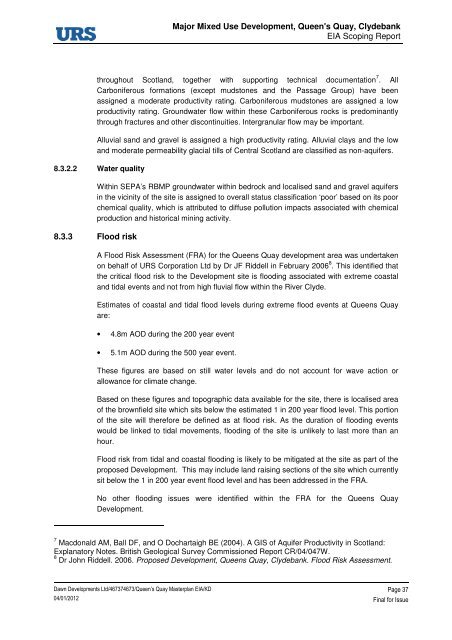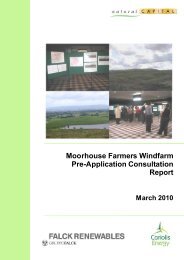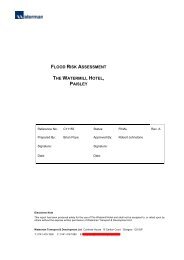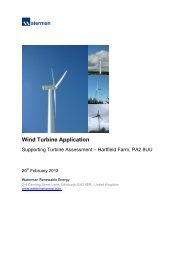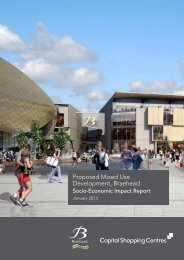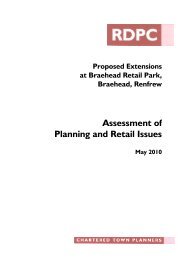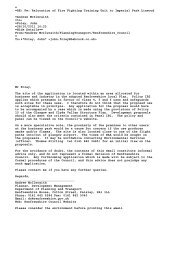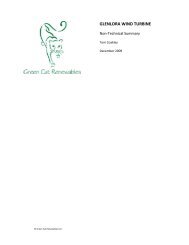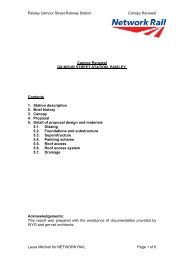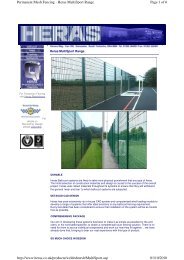Supporting documents - Renfrewshire Council
Supporting documents - Renfrewshire Council
Supporting documents - Renfrewshire Council
You also want an ePaper? Increase the reach of your titles
YUMPU automatically turns print PDFs into web optimized ePapers that Google loves.
Dawn Developments Ltd/467374673/Queen’s Quay Masterplan EIA/KD<br />
04/01/2012<br />
Major Mixed Use Development, Queen's Quay, Clydebank<br />
EIA Scoping Report<br />
throughout Scotland, together with supporting technical documentation 7 . All<br />
Carboniferous formations (except mudstones and the Passage Group) have been<br />
assigned a moderate productivity rating. Carboniferous mudstones are assigned a low<br />
productivity rating. Groundwater flow within these Carboniferous rocks is predominantly<br />
through fractures and other discontinuities. Intergranular flow may be important.<br />
Alluvial sand and gravel is assigned a high productivity rating. Alluvial clays and the low<br />
and moderate permeability glacial tills of Central Scotland are classified as non-aquifers.<br />
8.3.2.2 Water quality<br />
Within SEPA’s RBMP groundwater within bedrock and localised sand and gravel aquifers<br />
in the vicinity of the site is assigned to overall status classification ‘poor’ based on its poor<br />
chemical quality, which is attributed to diffuse pollution impacts associated with chemical<br />
production and historical mining activity.<br />
8.3.3 Flood risk<br />
A Flood Risk Assessment (FRA) for the Queens Quay development area was undertaken<br />
on behalf of URS Corporation Ltd by Dr JF Riddell in February 2006 8 . This identified that<br />
the critical flood risk to the Development site is flooding associated with extreme coastal<br />
and tidal events and not from high fluvial flow within the River Clyde.<br />
Estimates of coastal and tidal flood levels during extreme flood events at Queens Quay<br />
are:<br />
• 4.8m AOD during the 200 year event<br />
• 5.1m AOD during the 500 year event.<br />
These figures are based on still water levels and do not account for wave action or<br />
allowance for climate change.<br />
Based on these figures and topographic data available for the site, there is localised area<br />
of the brownfield site which sits below the estimated 1 in 200 year flood level. This portion<br />
of the site will therefore be defined as at flood risk. As the duration of flooding events<br />
would be linked to tidal movements, flooding of the site is unlikely to last more than an<br />
hour.<br />
Flood risk from tidal and coastal flooding is likely to be mitigated at the site as part of the<br />
proposed Development. This may include land raising sections of the site which currently<br />
sit below the 1 in 200 year event flood level and has been addressed in the FRA.<br />
No other flooding issues were identified within the FRA for the Queens Quay<br />
Development.<br />
7 Macdonald AM, Ball DF, and O Dochartaigh BE (2004). A GIS of Aquifer Productivity in Scotland:<br />
Explanatory Notes. British Geological Survey Commissioned Report CR/04/047W.<br />
8 Dr John Riddell. 2006. Proposed Development, Queens Quay, Clydebank. Flood Risk Assessment.<br />
Page 37<br />
Final for Issue


